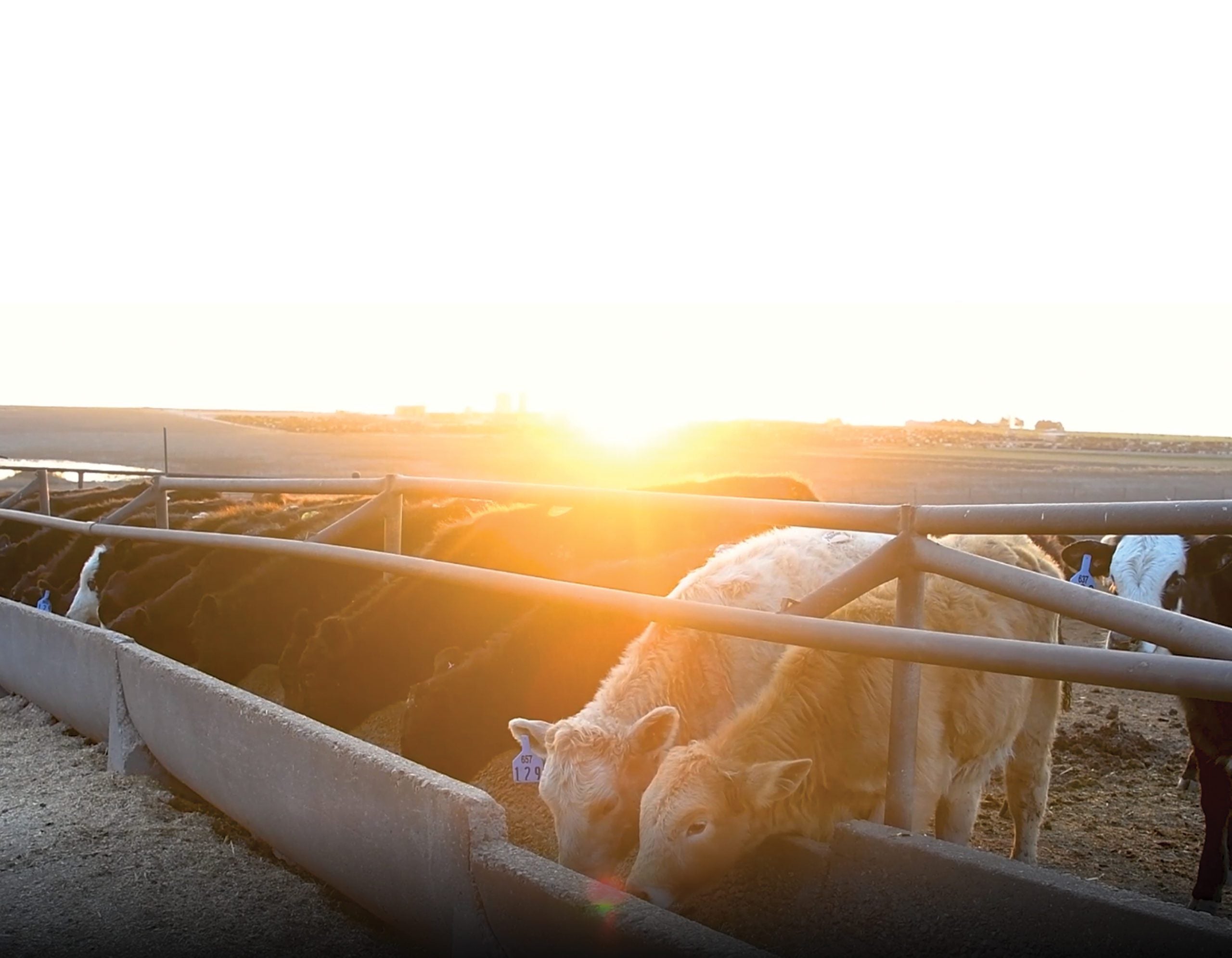In today’s stocker and feeder industry, producers must rely on “high-risk” sale barn calves for inventory. Trailer weaning, commingling, and non-existent health programs make these calves challenging to precondition and put into production. The fact that most of these calves have no immunity and have a rumen that is not mature makes them very susceptible to environmental and airborne pathogens. Exposure to other cattle, dusty sale barns, and hours without feed and water during the sale and transportation to an unfamiliar environment starts the process of “shipping fever.”
Pressure from consumers – both foreign and domestic – for less antibiotic use has increased the focus for alternatives to antibiotics. Nutritionists I veterinarians, and academic researchers are starting to focus more on Sub-Acute Ruminal Acidosis (SARA) – often a result of stress – and the effects it has on appetite, immunity, and cortisol levels in cattle. Stress is unavoidable when cattle are weaned I transported, commingled, and processed and is the leading cause of SARA.
How Stress Affects Ruminal Health
Stress creates a physiological chain reaction that increases acid production in the rumen, resulting in a lower ruminal pH. This imbalance must be corrected for the calf to digest any feedstuffs that are ingested. Prolonged acidity in the rumen compromises the protective mucosal lining, allowing bacteria from the rumen to leak into the bloodstream, causing shipping fever. A compromised rumen also means that the calf’s immune system is being negatively impacted as 80% of the calf’s immune system is contained in and around the rumen and small intestine.
A compromised immune system allows secondary pathogens in the respiratory tract to multiply and migrate to the lungs where irreparable damage occurs. These pathogens are the main cause of death in “high-risk” calves.
The three physiological effects of stress that impact a “high-risk” calf are:
• An increase in acid production and a decrease in pH of the rumen suppresses the appetite and impacts digestion.
• An elevated core temperature causing fever and increasing morbidity.
• An increase in blood cortisol levels suppresses the immune system and appetite.
An increase in cortisol suppresses appetite by affecting the brain’s ability to release hormones that trigger appetite. Elevated cortisol levels also suppress the immune system, making vaccinations ineffective when administered to stressed calves. A climb in the core temperature can prove detrimental as fever greatly increases morbidity and the possibility of mortality.
How CattlActive® Can Help
CattlActive® is an all-natural oral drench that is proven to raise the pH of the rumen 0.9 units in 15 minutes. It is also proven to lower the core temperature by as much as 6° F in 15 minutes. In addition, it has been shown to lower cortisol levels from an elevated 229 nmols to a more beneficial level of 153 nmols.
CattlActive® can also be used in a water source at 1 ml/gallon to sustain these beneficial levels of pH, core temperature, and cortisol. Every time a calf is processed, handled, revaccinated, or treated for sickness it is stressed, increasing the risk of SARA affecting that calf. The ability of CattlActive® to neutralize acid in 15 minutes makes it ideal for “high-risk” calves.
Good quality feed and water are the best medicine for cattle – creating the environment in the rumen to receive feed and water is paramount. This encourages the beneficial microbes to flourish and promote proper digestion. It also increases the calf’s ability to regain shrink, respond to vaccines, and fight off disease. Remember, antibiotics are only 20% of the defense against disease in cattle. Vaccines, good management, and nutrition are the other 80%. Using CattlActive® in your operation will encourage “high-risk” calves to eat and drink, supporting a healthier animal overall.
For a printable copy of this article, including cost analysis of CattlActive®, please click here.





